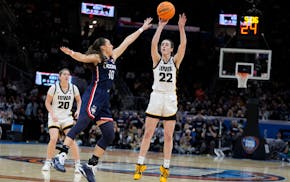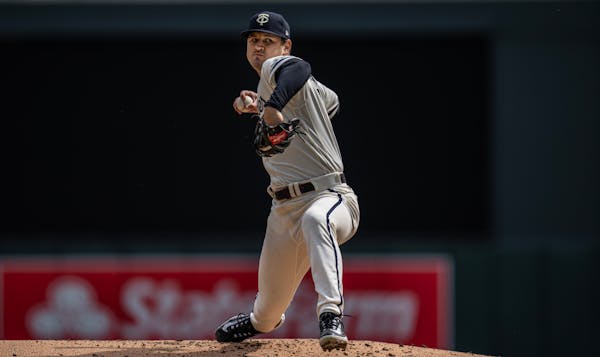As early as the second inning Thursday at Target Field, the Padres had problems with the strike zone presented by home plate umpire Brock Ballou.
They objected to a few of his decisions throughout the game until Ballou had had enough and ejected San Diego skipper Bob Melvin in the eighth. Melvin emerged from the dugout and gave Ballou a few choice words before leaving the field.
Later that day on the east side of the metro area, St. Paul Saints manager Toby Gardenhire sat in his dugout knowing he would not have a beef with plate umpire Randy Rosenberg.
Rosenberg wasn't calling balls and strikes. The automated ball and strike system (ABS) was.
You might have recently heard something like "Robo-umps are coming to baseball!" This is it, although you'll be disappointed if you are hoping to see actual robots.
In its quest to ensure fair play — among other things — Major League Baseball has tested out an automatic strike zone in the minor leagues and the Arizona Fall League. The testing, which began in 2019, now has reached Class AAA, including the Saints' home at CHS Field.
The Hawk-Eye system is used, and this technology determines a two-dimensional strike zone at the plate. The tech is invisible to us all. Once a pitch is thrown, the plate umpire is quickly told through an earpiece if the pitch was a strike or ball.
On Thursday, during the Saints' game against Indianapolis, there wasn't much delay from Rosenberg when he called strikes.
"It's interesting," Gardenhire said. "You get less complaining in the dugout because there is less to argue about. You watch the games on TV, and you want the umpires to be right. When a pitch is borderline, it's a really hard job as an umpire back there to get everything right."
Alex Kirilloff, who played 10 games with the Saints before joining the Twins, joked, "It definitely takes the arguing out of it — unless you want to yell up at the box for it to be recalibrated."
The ABS will eventually be promoted to the majors once adjustments have been made following this test period. The league has not yet determined how, or when, it will be used.
The technology is being used in two different ways now in Class AAA. For the first three games of a six-game series, the ABS system calls balls and strikes. For the next three games, the umpire calls the game, with each team given three challenges. Managers aren't allowed to challenge pitches, but the catcher, pitcher or hitter can ask for one. The ABS is then used as the final arbiter.
This has added another layer of strategy to games, as teams don't want to use their challenges too soon. That can be tough. During a game last Sunday against Nashville, Saints righthander Aarón Sánchez was pounded for six runs in the first inning — and he used two challenges along the way.
This is the format that will likely reach the majors, and it will inject some excitement, as Saints fans found out May 5 with the first challenge in CHS Field history. Nashville's Andruw Monasterio challenged a low pitch by Simeon Woods Richardson by tapping his helmet.
The challenge was played on the scoreboard, resembling a challenge in tennis. A graphic showed a ball traveling toward the plate, and fans cheered when the pitch was ruled a strike.
"All the guys start cheering from the dugout when you get it right," Gardenhire said. "It's entertaining for the fans to see the screen read ball or strike. They are fine with it either way."
Traditionalists want humans to play and judge baseball, but the stakes are too high. As baseball gets cozier with sports gambling companies — there are sports books at three MLB stadiums and one is opening next to Wrigley Field in Chicago — there's a heightened desire to avoid incorrect calls affecting outcomes.
MLB is not allowing umpires to be interviewed, so their thoughts on this are unknown.
Back on the field, the recently embraced art of pitch framing is being threatened with extinction by ABS technology. Twins catcher Ryan Jeffers said framing is a big part of his game, one he has worked years to develop.
Fear not, Ryan. Some believe negative pitch framing, in which making strikes look like balls to fool batters into using a challenge, could be the corresponding move.
"I'm against it," Jeffers said of ABS. "I think and I hope it will come in more as a challenge system, at least at first. That's a happy medium between what the players want and what the league wants."
Neal: Eulogy for a bad season. May the Wild's future come quickly.
Neal: Tessa Johnson still feeling Minnesota's love in S. Carolina
Neal: From LeBron to STMA, Tessa Johnson lit up the basketball world



